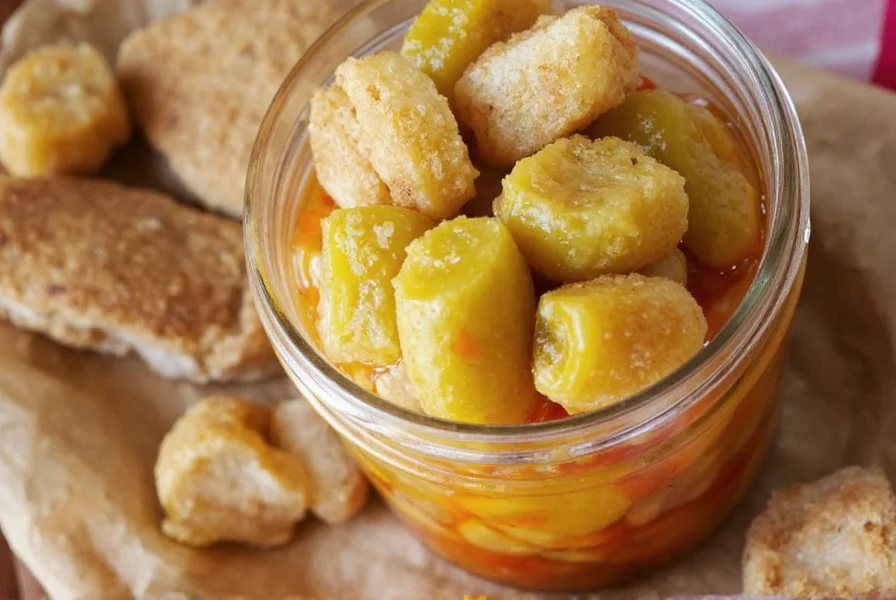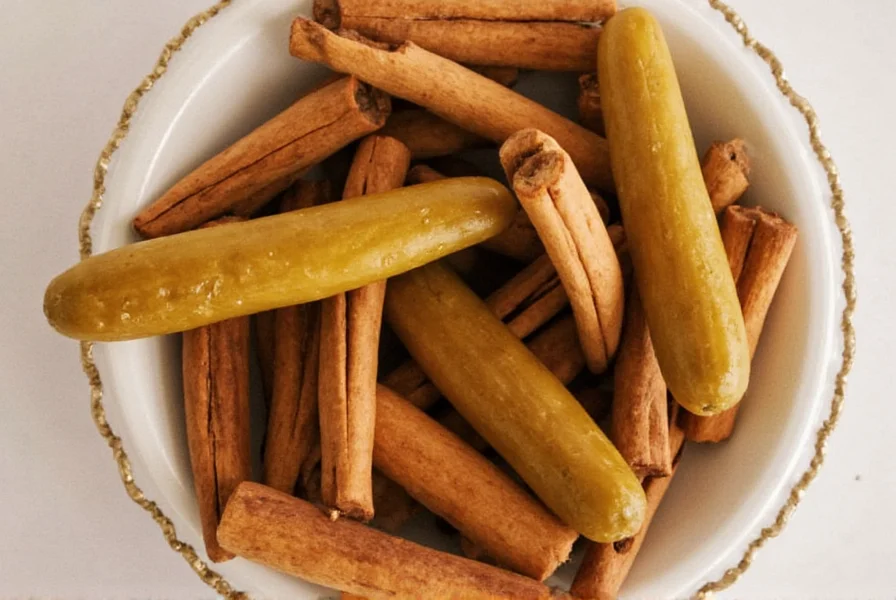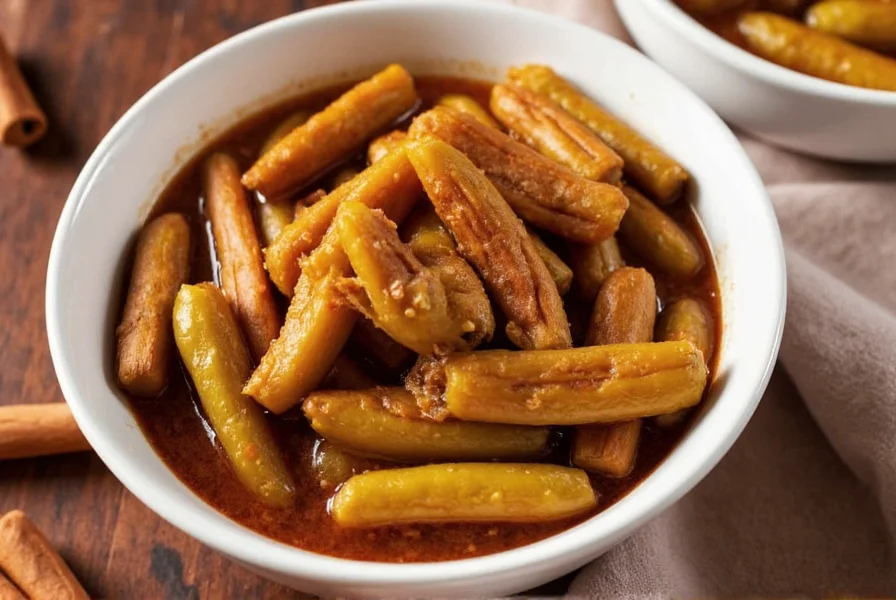Cinnamon pickles represent a fascinating culinary tradition that marries preservation techniques with unexpected flavor combinations. Unlike standard dill or bread-and-butter pickles, this variation incorporates cinnamon sticks or ground cinnamon into the pickling liquid, creating a complex taste experience that has delighted palates for generations. The resulting product features a surprising harmony of sweet, sour, and spicy elements that elevates ordinary cucumbers into something extraordinary.
The Historical Roots of Cinnamon Pickles
While pickling vegetables dates back thousands of years across various cultures, the specific addition of cinnamon to pickle brines emerged primarily in American preserving traditions during the 19th century. Historical cookbooks from the 1800s reveal that resourceful homemakers experimented with available spices to create distinctive preserved foods. Cinnamon, once considered a luxury spice, became more accessible as global trade expanded, leading enterprising cooks to incorporate it into their preserving recipes.
This sweet-spicy preservation method particularly flourished in regions where both cucumbers and cinnamon were readily available. The technique spread through community cookbooks and family recipe exchanges, with each household developing their own variations of the perfect cinnamon pickle ratio. These pickles became especially popular as accompaniments to holiday meals and special occasions due to their distinctive flavor profile.
Understanding the Flavor Science
The magic of cinnamon pickles lies in the chemical interaction between the spice compounds and the pickling process. Cinnamon contains cinnamaldehyde, which provides its characteristic warmth, while the acetic acid in vinegar creates the familiar pickle tang. When combined during the canning process, these elements undergo subtle transformations that create new flavor compounds.
| Flavor Component | Traditional Pickles | Cinnamon Pickles |
|---|---|---|
| Primary Flavor Notes | Sour, salty, herbal | Sweet-spicy, warm, complex |
| Aftertaste | Clean, refreshing | Warming, lingering |
| Best Food Pairings | Burgers, sandwiches | Cheese boards, roasted meats, charcuterie |
This flavor complexity makes cinnamon pickles particularly versatile in culinary applications. The warm spice notes complement rich foods like roasted meats and cheeses, while the acidity cuts through fatty dishes. Many professional chefs now feature these pickles as sophisticated accompaniments in upscale dining settings, recognizing their ability to bridge sweet and savory elements on the plate.
Classic Cinnamon Pickle Recipe
Creating authentic cinnamon pickles at home requires attention to proper ratios and technique. The following traditional recipe yields approximately 4 pints of perfectly balanced sweet-spicy pickles:
| Ingredient | Measurement | Notes |
|---|---|---|
| Cucumbers | 2 pounds | Firm, pickling variety, sliced 1/4 inch thick |
| White vinegar | 2 cups | 5% acidity |
| Water | 2 cups | |
| Granulated sugar | 1½ cups | |
| Cinnamon sticks | 4 | 3-inch pieces |
| Whole cloves | 8 | |
| Mustard seeds | 1 teaspoon | |
| Onion slices | ½ cup | Optional for complexity |
Preparation method for homemade cinnamon pickles: Begin by washing and slicing cucumbers uniformly. Pack them into sterilized jars with optional onion slices. In a non-reactive pot, combine vinegar, water, sugar, cinnamon sticks, cloves, and mustard seeds. Bring to a boil, stirring until sugar dissolves. Pour hot brine over cucumbers, leaving ½ inch headspace. Remove air bubbles, wipe rims, apply lids and rings, then process in a boiling water bath for 10 minutes. Allow pickles to mature for at least 4 weeks before eating for optimal flavor development.
For those wondering how long do cinnamon pickles last, properly canned and stored in a cool, dark place, they maintain peak quality for 12-18 months. Once opened, refrigerate and consume within 2 months. The flavor continues to develop and mellow over the first few months of storage, making patience a virtue with this preserving method.
Variations and Modern Twists
Contemporary cooks have expanded on the traditional cinnamon pickle recipe with creative adaptations. Some popular variations include:
- Cinnamon-vanilla pickles: Adding a split vanilla bean to the brine creates an unexpectedly sophisticated flavor profile
- Spiced cinnamon pickles: Incorporating allspice, nutmeg, or cardamom for additional warmth
- Fruit-infused versions: Adding apple slices or dried cranberries for complementary sweet notes
- Vinegar alternatives: Using apple cider vinegar for a fruitier base note
When experimenting with different cinnamon pickle recipes, remember that the quality of your cinnamon significantly impacts the final product. Ceylon cinnamon (often called "true cinnamon") provides a more delicate, complex flavor compared to the more common Cassia cinnamon, which has a stronger, more pungent profile. Both work well, but produce noticeably different results.

Serving Suggestions and Pairings
Cinnamon pickles shine when paired thoughtfully with complementary foods. Their sweet-spicy profile makes them particularly versatile across various culinary applications:
- As an accompaniment to strong cheeses like aged cheddar or blue cheese
- Sliced thin and added to turkey or ham sandwiches for unexpected complexity
- Chopped and mixed into chicken or tuna salad for a flavor boost
- Served alongside roasted pork or duck dishes to cut through richness
- As a surprising element on charcuterie boards with cured meats
For those exploring what to serve with cinnamon pickles, consider their role as a palate cleanser between rich courses. The acidity and spice help reset the taste buds, making them particularly valuable in multi-course meals. Some innovative bartenders even use cinnamon pickle brine as a component in craft cocktails, creating intriguing sweet-sour-spicy notes in drinks.

Common Questions About Cinnamon Pickles
Many home preservers have questions about perfecting their cinnamon pickle technique. Understanding the science behind the process helps achieve consistent results. The balance between vinegar's acidity, sugar's sweetness, and cinnamon's warmth requires careful attention to ratios and processing times.
Are cinnamon pickles sweet or sour?
Cinnamon pickles feature a balanced sweet-sour profile with distinctive spicy warmth. The sugar content creates noticeable sweetness that counteracts the vinegar's acidity, while the cinnamon adds a warming spice note that distinguishes them from traditional sweet pickles. The final taste typically leans slightly sweet with complex layered flavors that evolve as you eat them.
Can I use ground cinnamon instead of sticks for pickling?
While cinnamon sticks are preferred for pickling because they provide consistent flavor without clouding the brine, you can use ground cinnamon in a pinch. Use ¼ teaspoon of ground cinnamon per pint jar instead of a cinnamon stick. Be aware that ground cinnamon may make the brine slightly cloudy and could potentially create a more intense, less nuanced cinnamon flavor. For best results with ground cinnamon, wrap it in cheesecloth before adding to the brine.
Why did my cinnamon pickles turn out mushy?
Mushy cinnamon pickles typically result from one of several common issues: using overripe cucumbers, not trimming blossom ends properly, skipping the ice water soak step, or overprocessing during canning. For crisp pickles, select firm, unwaxed cucumbers, trim 1/16 inch from blossom ends, soak in ice water for 4-6 hours before pickling, and process for the minimum recommended time. Adding grape leaves or calcium chloride can also help maintain crispness.
Do cinnamon pickles have health benefits?
Like traditional pickles, cinnamon pickles provide vinegar's potential digestive benefits and are low in calories. Cinnamon may offer additional benefits including blood sugar regulation properties and antioxidant effects. However, most cinnamon pickle recipes contain significant sugar, which offsets some potential health benefits. For a healthier version, reduce sugar by 25-30% or use alternative sweeteners, though this may affect texture and preservation quality.
How do I fix cinnamon pickles that are too spicy?
If your cinnamon pickles turned out too spicy, you have several options: 1) Add more cucumbers to dilute the spice concentration, 2) Create a new batch of plain brine (without cinnamon) and mix with your existing pickles, 3) Add a small amount of additional sugar to balance the heat, or 4) Use the overly spicy pickles in cooked applications where the heat will mellow, such as in stews or braises. For future batches, reduce cinnamon quantity by 25% and consider using milder Ceylon cinnamon instead of stronger Cassia varieties.











 浙公网安备
33010002000092号
浙公网安备
33010002000092号 浙B2-20120091-4
浙B2-20120091-4